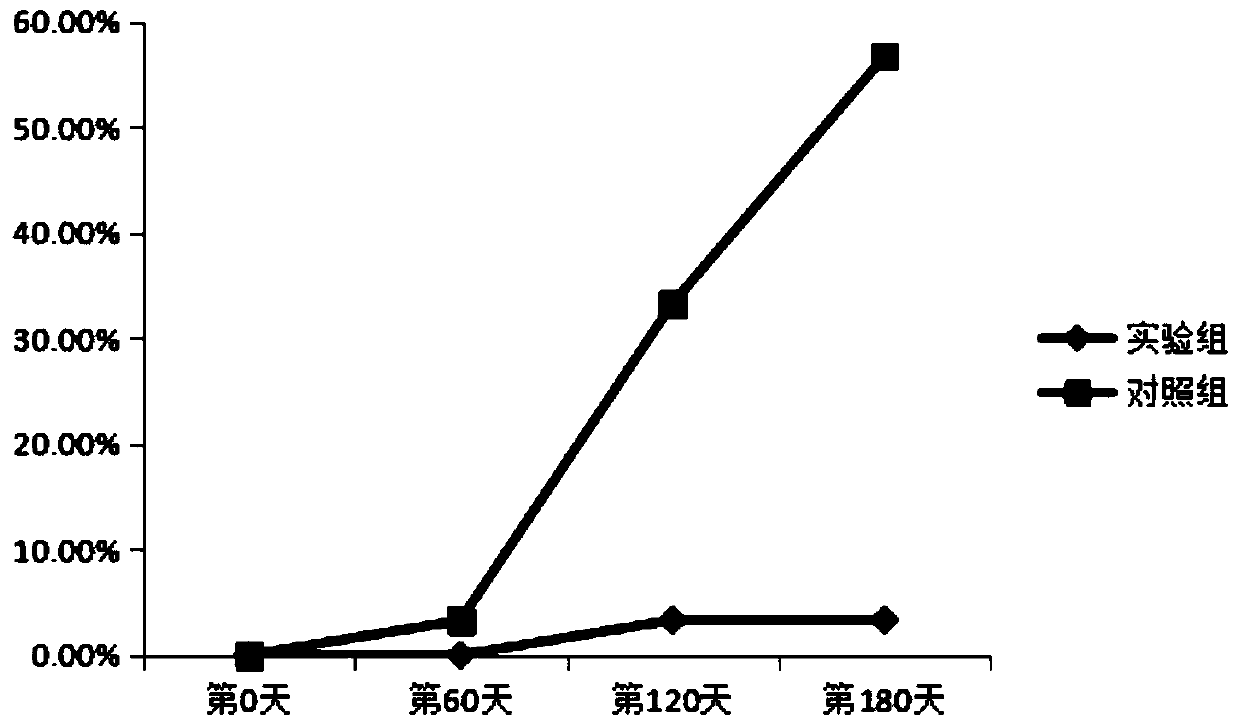A method of cultivating spiny frog with vitamin-rich Tenebrio molitor
A Tenebrio molitor and vitamin technology, applied in the field of breeding, can solve the problems of vitamin A absorption rate, low utilization rate, difficulty in controlling the amount of vitamin A, and high feeding cost in the adult frog stage, so as to reduce the possibility of infection and reduce the risk of infection. Suffering from skin rot and improving immunity
- Summary
- Abstract
- Description
- Claims
- Application Information
AI Technical Summary
Problems solved by technology
Method used
Image
Examples
Embodiment 1
[0026] Research on Feeding Tenebrio Molitor Rich in Vitamins
[0027] 1) Larva culture: feed Tenebrio molitor to the older stage according to conventional methods, feed 68% of wheat bran, 22% of corn flour, 5% of soybean meal, 0.5% of salt, and 4.5% of water-containing vegetables. 18% of the mass, once every 5 days, stocking density is 3.5kg / m 2 For the worm body, the breeding temperature is controlled at 26°C, the relative humidity is controlled at 70%, and the manure is screened every 3 days; the Tenebrio molitor is raised to about 1.5cm.
[0028] 2) Rearing rich in vitamins: transfer 1400 grams (about 1.5 cm) of the above-mentioned larvae of the same age to a special rearing box, and divide them into seven groups, each with 200 grams. The feed is 68% of wheat bran, 22% of corn flour, 5% of soybean flour, 0.5% of salt, and 4.5% of water-containing vegetables. The first group: blank control, Tenebrio molitor feed formula without any treatment. The second group: add vitamin...
Embodiment 2
[0034] Study on Optimum Feed Formula for Tenebrio Molitor
[0035] Repeat the experiment of step 1) in Example 1, 1000 grams of larvae of the same age (about 1.5cm) are equally divided into 5 groups, and are respectively A group, B group, C group, D group, E group and carry out experiment, each group The powder of vitamin A tablets in the Tenebrio molitor feed formula was respectively set to 4.1%, 4.3%, 4.5%, 4.7%, 4.9% of the total feed quality, and the rest of the conditions were unchanged. Collect and measure vitamin A content.
[0036] Table 2
[0037] Group A Group B Group C Group D Group E Vitamin A content 658mg / KG 701mg / KG 687mg / KG 669mg / KG 659mg / KG
[0038] The experimental results showed that the deposition of vitamin A in the Tenebrio molitor of group B was the highest.
Embodiment 3
[0040] Preparation of Tenebrio Molitor Rich in Vitamins
[0041] 1) Larva culture: feed Tenebrio molitor to the older stage according to conventional methods, feed 68% of wheat bran, 22% of corn flour, 5% of soybean meal, 0.5% of salt, and 4.5% of water-containing vegetables. 18% of the mass, once every 5 days, stocking density is 3.5kg / m 2 For the worm body, the breeding temperature is controlled at 26°C, the relative humidity is controlled at 70%, and the manure is screened every 3 days; the Tenebrio molitor is raised to about 1.5cm.
[0042] 2) Rearing rich in vitamins: transfer 1400 grams (about 1.5 cm) of the above-mentioned larvae of the same age to a special rearing box, and divide them into seven groups, each with 200 grams. The feed is 68% of wheat bran, 22% of corn flour, 5% of soybean meal, 0.5% of salt, and 4.5% of water-containing vegetables. At the same time, vitamin A tablet powder is added. The amount of vitamin A tablet powder added is 4.3% of the total feed ...
PUM
 Login to View More
Login to View More Abstract
Description
Claims
Application Information
 Login to View More
Login to View More - R&D
- Intellectual Property
- Life Sciences
- Materials
- Tech Scout
- Unparalleled Data Quality
- Higher Quality Content
- 60% Fewer Hallucinations
Browse by: Latest US Patents, China's latest patents, Technical Efficacy Thesaurus, Application Domain, Technology Topic, Popular Technical Reports.
© 2025 PatSnap. All rights reserved.Legal|Privacy policy|Modern Slavery Act Transparency Statement|Sitemap|About US| Contact US: help@patsnap.com


